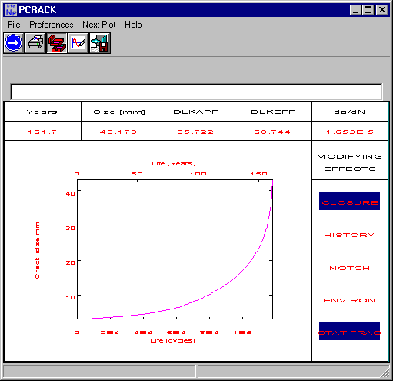XXXXXXXXXXXXXXXXXXXXXXXXXXXXXXXXXXXXXXXXXXXXXXXXXXXXXXXXXXXXXXXXXXXXXXXXXXXXXXXXXXXXXXXXXXXXXXXXXXXXXXXXXXXXXXXXXXXXXXXXXXXXXXXXXXXXXXXXXXXXXXXXXXXXXXXX''"> Concluding Remarks
This exercise ran all three methods of fatigue analysis to investigate different aspects of life evaluation on the same component.
The Total Life (S-N) analysis was performed on the lug weld to demonstrate a fail safe design.
As a side note, a weld class S-N curve was used. Note that two types of S-N analysis can be performed with a weld. Either a normal S-N analysis or an S-N analysis based on the current British Standard. The British Standard can be turned on using the Materials Info... form by scrolling the spreadsheet to the right and setting the Weld cell to YES. Try reruning the analysis to see the differences in results. With Weld set to YES, various effects are taken into account according to the British Standard, such as residual stress based on the weld class selected.
The Crack Initiation analysis was performed on the lug itself to demonstrate the safe life approach.
And finally the Crack Growth analysis was performed on the lug to demonstrate a damage tolerant approach where inspection intervals were determined based on crack growth rate.
To be completely thorough you might also run a crack growth analysis at the lug weld. It is highly unlikely, though, that this would yield any crack growth since the S-N analysis gave infinite life and a safety factor of greater than 8 was achieved.
For this particular component, the safe life approach really did not avail us much. The crack initiates very quickly in comparison to the time it takes to propagate the crack. From this perspective, we can ignore the Crack Initiation analysis entirely.

